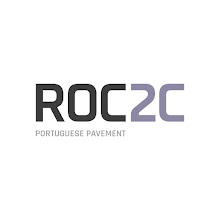History
The original building of the Monument of the Discoveries, as outlined Cottinelli Telmo and Leitão de Barros and Leopoldo de Almeida formed plastic and mental, was erected in 1940 for the Portuguese World Exhibition. Originally it was composed, in its part of architecture, a lightweight structure of iron and cement, and gypsum in the sculptural composition consisting of 33 figures.

The monument has the shape of a caravel, inferiorly flanked by two ramps that meet at the bow and where he stands, with 9 feet tall, the figure of Prince Henry. Along the ramps are 16 figures on each side, carved with balance and precision, where the dynamism and movement of bodies are projected towards the river Tagus, which represent a synthesis of historical figures linked directly or indirectly to the Discoveries.
The year 1960 represents a milestone in Henriquina Celebrations, which would have the main points of the places where once lived the Prince.
In Bethlehem, rose back up the Monument of the Discoveries in coated concrete stone rosal Leiria, with the aim of being the visible face of the Celebration of the 5th Centenary of the death of Prince.

Within these celebrations, the monument was inaugurated on August 9, 1960.
The property is given for completion on October 10, 1960, being held by the General Administration of the Port of Lisbon. In 1962 it concluded an agreement of transfer with the City of Lisbon.
The Monument to the Discoveries remains in a state of hibernation between 1960 and 1979. This year, the order No 57/P/79, published in the Municipal No. 13260 of November 5, indicated that the property would serve to house an exhibition. The truth is that only in 1985 that the Standard will be undergoing renovation works that allowed public access to the gazebo, an auditorium and exhibition hall.
In April 2003 the management of the Monument to the Discoveries is entrusted to EGEAC, EEM

Decorating the yard for access to the monument: Rosa-dos-Ventos.
The Republic of South Africa offered to decorate the yard access, a compass card with 50 meters in diameter, executed in marble of various types, containing a planisphere of 14 meters. Ships and caravels built mark the main routes of the Portuguese Discoveries. The authorship of the design belongs to Cristino da Silva Arq.
www.padraodosdescobrimentos.egeac.pt
Photos: Celso Gonçalves Roc2c

Comentários
Enviar um comentário